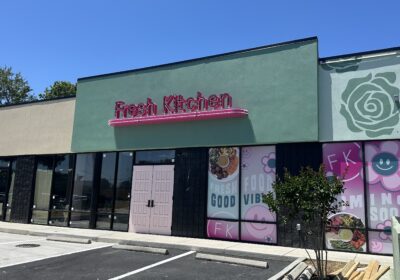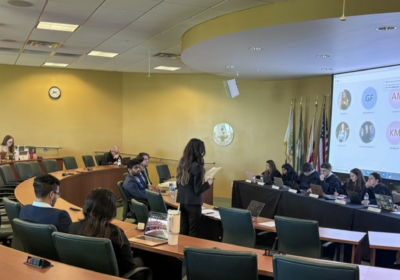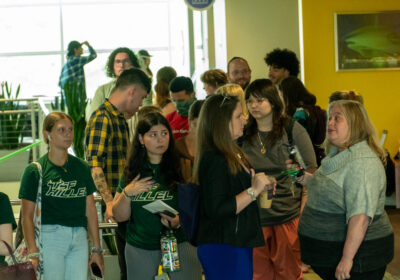Parking services offers suggestions
Administrators stress that there are alternatives to finding a parking spot on campus, but one group of students think that is not enough.
Randy Ojeda, a junior majoring in psychology, created a Facebook page called “USF Students for Efficient Parking,” which has collected 83 followers in about three weeks.
“All I want to know is what their plan is to fix the situation,” he said.
Manuel Lopez, director of Parking and Transportation Services (PATS), said USF has 20,856 parking spots, which is more than the city of Tampa’s 11,545 controlled spots. He said students bought parking permits sooner this year than the previous year.
Lopez said his goal is to help students become aware of other parking areas on campus.
“Laurel (Drive Parking Facility) has probably about 150 spaces open at any one time,” he said.
One of the solutions Lopez offered to students who can’t find a parking spot was to park in that garage and take the USF Bull Runner shuttle to class.
“I know it sounds counter-intuitive to park a little further out, but it won’t take any time to park,” he said. “(Then), get on the bus, and it will probably take 10 minutes.”
However, Ojeda said he thinks that alternative is a hassle.
“There are strategies that students can use to find parking easier but not a solution,” he said.
During the first week of classes, Lopez said Lot 23T, across from the Business Administration building, had about 60 percent of the 300 spaces used.
Some new changes driven by student demand include an extra lot on USF Sycamore Drive, Lopez said.
The top two floors of Crescent Hill Parking Facility are open to students starting this year. Lopez said all six floors of the garage are open to staff and students, adding another 265 available parking spaces. Last year, the top two floors were residential parking, but that has changed since the Marshall Student Center has become a major event destination.
Resident parking moved to Lot 17B on USF Willow Drive and Lot 35 beside the tennis courts.
Lopez said Gold Staff in Lot 32 between USF Health and H. Lee Moffitt Cancer Center was consolidated into Lot 33 right above it.
“We’re constantly monitoring the lots (to see) if people are using them or not,” he said. He said that’s how PATS decides what the parking area will be designated as.
The Richard A. Beard Parking Facility gained more spaces after the cancer center was moved and the entire garage is now open, he said.
Lopez said an inevitable new parking garage would be built once all of the spaces are taken up, and it would be a 20 percent increase.
“There’s not enough parking in front of buildings, and there never will be,” Lopez said. “It’s hard for me to go and ask for more money when there’s spaces available.”
Lopez said there has never been a one-to-one allocation of permits to spaces available.
“Those spaces, if we had a one-to-one (design) would be empty,” he said.
Lorraine Caccavale, business manager of PATS, said students have to find out where there are available spaces.
PATS offers the Bull Runner shuttle to students. Caccavale said about 18-19 shuttles run at any one point with about 10 minutes between them.
Lopez said due to construction on campus, electronic signs, Twitter updates and Blackboard Web usage offered by PATS may help students find available lots.
Caccavale said there are seven electronic signs providing parking instructions.
“Nobody wants to drive around for 45 minutes,” she said.
PATS added the electric signs the Wednesday before school started for residents moving in, and left them up through the first week of school.
“At almost every orientation, we do presentations and a showcase to give information about where to park and how to order (permits) online,” she said.
Caccavale and Lopez started a Twitter page on the first week of school to update students on available lots.
Ojeda said the Twitter account was a good idea but doesn’t work.
“There are 16 followers, including me,” he said.
Ojeda said, to keep students updated signs should be put up at the lot to tell students whether they are full or not.
“The service that we’re paying to get we aren’t receiving,” Ojeda said. “We’re paying $180 to not be able to park.”






